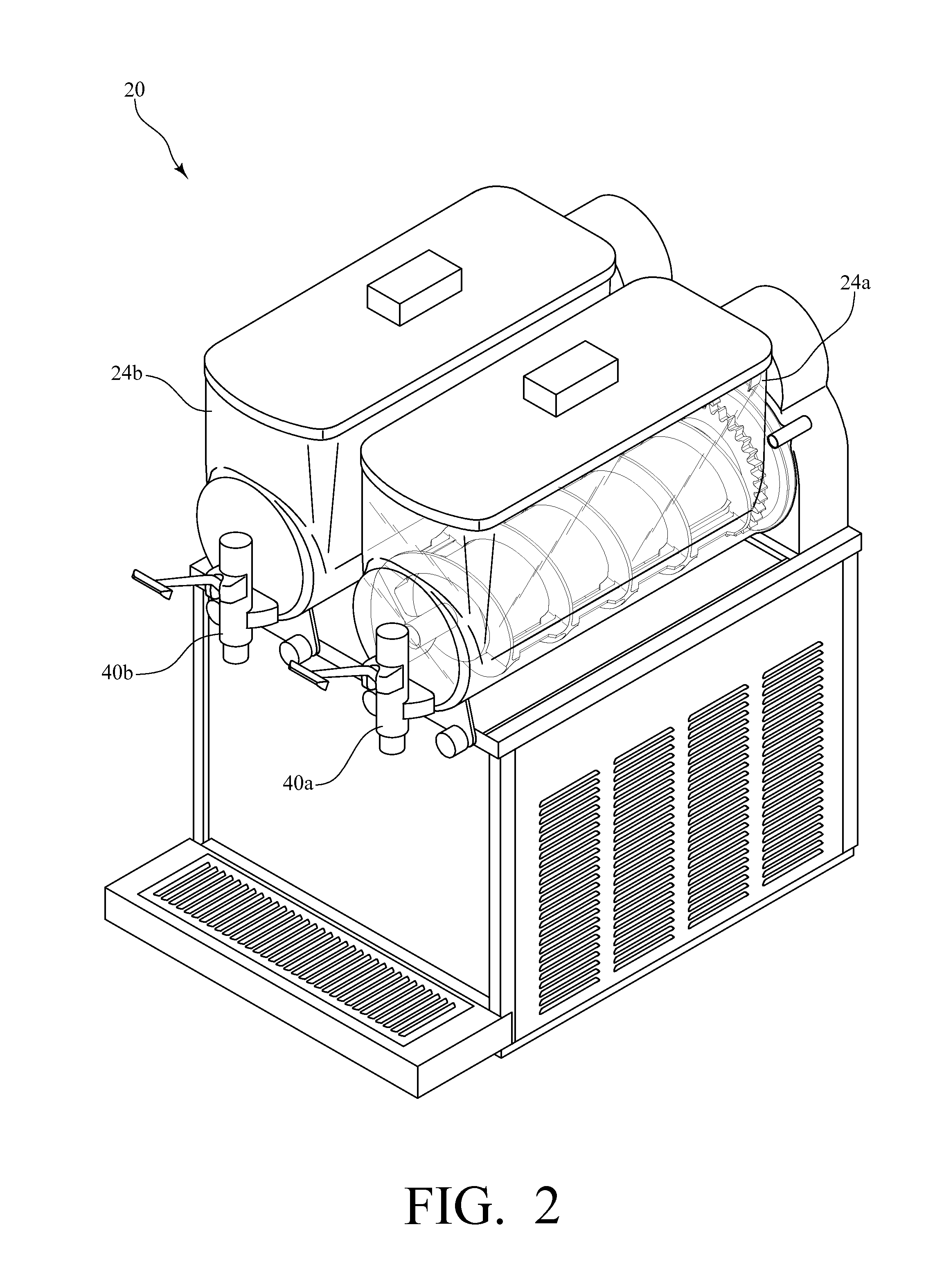Beverage dispenser for partially frozen beverages with an improved drive and sealing system
- Summary
- Abstract
- Description
- Claims
- Application Information
AI Technical Summary
Benefits of technology
Problems solved by technology
Method used
Image
Examples
Embodiment Construction
[0022]The present invention is a beverage dispenser for partially frozen beverages with an improved drive and sealing system.
[0023]FIG. 2 is a perspective view of an exemplary beverage dispenser made in accordance with the present invention. The exemplary beverage dispenser 20 has two separate bowls 24a, 24b. However, it should be recognized that a beverage dispenser made in accordance with the present invention could have any number of bowls without departing from the spirit and scope of the present invention.
[0024]FIG. 3 is a perspective view of the same exemplary beverage dispenser 20, but with one bowl 24a hidden from view to better illustrate some of the internal components of the exemplary beverage dispenser 20.
[0025]As shown in FIGS. 2 and 3, in this exemplary beverage dispenser 20, in each bowl 24a, 24b, there is a freezing cylinder 30a, 30b, which, as mentioned above, is typical of prior art constructions. Furthermore, there is a dispenser assembly 40a, 40b at the front end...
PUM
 Login to View More
Login to View More Abstract
Description
Claims
Application Information
 Login to View More
Login to View More - R&D
- Intellectual Property
- Life Sciences
- Materials
- Tech Scout
- Unparalleled Data Quality
- Higher Quality Content
- 60% Fewer Hallucinations
Browse by: Latest US Patents, China's latest patents, Technical Efficacy Thesaurus, Application Domain, Technology Topic, Popular Technical Reports.
© 2025 PatSnap. All rights reserved.Legal|Privacy policy|Modern Slavery Act Transparency Statement|Sitemap|About US| Contact US: help@patsnap.com



